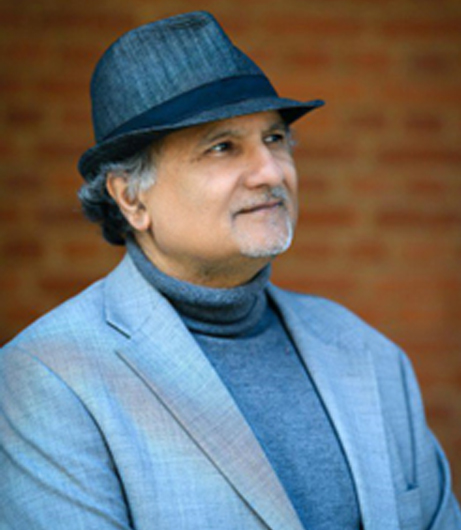Yes, the small chai and samosa shop across the Y-point was the place for us. There was no Gulmohar at that time, but our H4 cafeteria and the late-night shop at H1 were our favourite places to hang out. The mess workers at H4 were very dedicated and provided us with three meals a day. They also offered us Western-style food on Wednesday evening, right before we watched Star Trek in the TV room of H4.
Over to Dr. Nish!
Yes, I was part of Energy Systems Engineering, which was then part of Mechanical Engineering. Now it is a department by itself and has its own building! I was a solar energy innovator from the beginning and received a National Award from the National Research Development Corporation as a high school student, and published my first paper in the journal called “Avishkar” for the development of solar hot plates for cooking bread. Hence, I wanted to pursue solar thermal energy research at IIT Bombay. I was thrilled to be admitted to the second batch of ESE. In my solar energy studies, I developed the first solar panel integrated into the composite building materials and studied the performance of a prefabricated building-integrated solar panel as my thesis project.
I was very impressed with the works for Professor Suhas P. Sukhatme (ScD, MIT) in heat transfer and solar energy, and the works of Prof. Jayant Nayak in solar thermal modelling, who moved from IIT Delhi to IIT Bombay as a young assistant professor. Prof. Sukhatme and Prof. Nayak from ESE became mentors and gave me significant time to shape my research process and method for a significantly different solar thermal collector.
I worked with the late Prof. Maheshwar Sharon from the Chemistry department as we conducted many experiments on the photovoltaic solar cells created by electrochemical processes. He and I worked late in his lab to create hydrogen by electrolysing water with solar PV power. I also collaborated with Mrs. Madhuri Sharon on her cultural activities at IIT Bombay.
I had a musical collaboration with the late Prof. Subir Kar and Mrs. Nina Kar for their dedicated work on Rabindra Sangeet. As a trained Tabla player, I became part of the community of the Ravi Gitika organization created by Prof. Subir Kar. I accompanied several Ravindra dance dramas organised by Prof. Kar and Mrs. Kar.
I preserve and cherish many fond memories of these professors as they treated me like their family, and I was frequently invited to their homes for family activities. I was very touched when Professor Sukhatme and Mrs. Sukhatme invited my visiting parents to their home for a dinner, and Mrs. Sukhatme made my favourite cake! What a blessing that was for me!
As a classically trained Tabla player, I performed and participated in many musical and cultural activities around Mood Indigo, annual functions, and SPIC-MAKAY concerts. I also represented IIT Bombay in several music competitions across Mumbai.
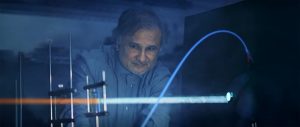
Dr. Nish in a Lab developing Photonic Smart Coatings for wavelength conversion of light
I am an academic inventor by nature with an abundance of curiosity for numerous disciplines of science and technology. Solar power generation is my lifelong passion, and having trained at IIT Bombay and MIT as an experimental and theoretical researcher, I can tackle new and emerging fields. At MIT, I worked on Molecular Dynamics simulations and laser Raman Spectroscopy of Bi-material Interfaces, a topic that I designed my doctoral thesis around.
At present, I am focusing on the photonic and plasmonic interactions of light with matter and numerous applications of “Localised Surface Plasmonic Resonances” for the enhancement of optoelectronics. The basic idea for photonic smart coatings is conversion of wavelength of light to the values where there is good quantum match with the photo-detecting devices, e.g. solar cells. The blue photons (UV) are not good for the generation electrons, so we convert them into red photons (NIR) that generate electrons with 99% quantum efficiency for silicon detectors.
I strongly believe that the photonic revolution is changing the understanding and utilization of light in numerous fields. That is my strong motivation to work with Prof. Shireesh Kedare and Prof. Ravindra Gudi to create a Centre of Excellence for Photonic Research at IIT Bombay.
As the story goes, at MIT, Cambridge, I was a pioneer in connecting super-computers (Cray-YMP) with graphics computations created by Silicon Graphics workstations. This allowed me to demonstrate to a classroom full of students how atoms and molecules dance under the influence of potential and kinetic energy. The Dean of Engineering at MIT then encouraged me to teach the use of technology, such as atomistic visualization, in the classroom to other professors. Besides my work on Molecular Tribology (science of friction) and surface science funded by the National Science Foundation, USA, I received funding as a research professor to create the Hypermedia Lab within the School of Engineering to enhance MIT’s education with hypermedia and multimedia. Later, this lab became a resource across MIT, and I was appointed as the Director of the Hypermedia Lab and Principal Educational Architect of MIT’s online education. This later led to the Open Courseware and the Open Knowledge initiatives, funded by the MIT-Stanford Alliance.
For many years, I devoted considerable time to developing the “Learning Cube Pedagogical Framework” for adaptive online education and MOOCs. I also suggested this model to Prof. Sukhatme when he was serving as the Director of IIT Bombay. My work on adaptive learning strategies was published in numerous journals and presented at numerous conferences across the globe.
Later, I formed my first company for the distribution of Adaptive Learning, licensing my technology from MIT and creating a company around the invention of the MetaMosaic interface, and raised significant series A funding, which is now named IntellAdapt Corporation, USA.
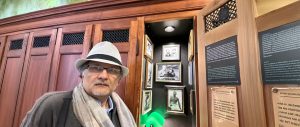
Dr. Nish at Einstein’s Locker at ETH Zurich, Switzerland while collaborating with German manufacturing partners
The motivation for Brainiak is the extension of an adaptive learning platform that I created for online education with five learning strategies – apprentice, incidental, inductive, deductive, and discovery. The issue was how to find which learning strategies are best for students. First, I used statistical inference models with big-data analytics, which receive significant funding from the National Science Foundation, USA. A better and efficient way to assess what is best for a learner is to look at the neuron activities in the brain while a learner is experiencing a learning environment. That led to the invention of the brain-computer interface using EEG probes on the prefrontal cortex of the human forehead. The human forehead relates to the neo-cortex of the brain, which is responsible for focus, attention, and decision-making. The EEG headband provides real-time brainwave data that allows a numerical algorithm to assess which learning strategy is best for a student within a half-hour session!
I was fortunate to receive numerous Small Business Innovation Research (SBIR) grants from the National Science Foundation of USA to start new ventures around my discoveries (patents). It is exhilarating to see an idea become a product and then be used by millions of people and impact their lives. Energy, education, and communication innovations can transform any society and equip it to participate in the global economy. The challenging part of a venture is to push through your idea against all odds if there is an excellent product/market fit, and whether it has an underlying mission to uplift society.
My latest venture, AdaptiveWaves India Pvt. Ltd is a humble effort to bring photonic smart coatings to enhance power generation by solar panels in India to create an abundance of clean energy. Saving the planet with a clean energy source across the globe is extremely rewarding.
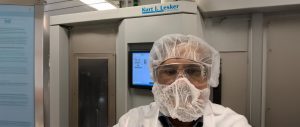
Dr. Nish in a Feb-lab for nano-optical coating design
My work at IIT Bombay influenced a lot of my trajectory to get to MIT. I was fortunate to receive recommendations from my professors at IIT Bombay (Prof. Sukhatme, Prof. Sharon, and Prof. Nayak), which helped me get into MIT. The foundation developed in thermal and energy science led me to focus on the fundamentals of the material science behind the energy and environment. I am very fortunate to have experienced the best of the east, IIT Bombay, and the best of the west, MIT, Cambridge. Again, like IIT Bombay, my experience of 5 years at MIT completing my doctoral degree (ScD) was very rewarding.
At IIT Bombay, I was a good student and a follower. At MIT, I developed the skills for academic leadership and doing ground-breaking research and innovation. The MIT environment as a student and as research faculty encouraged me to push the boundaries of science and engineering. That led me to become an entrepreneur to see ideas become a reality and build products that can influence society at large.
I am blessed by my family, which was full of musicians: Pt. Prabhakar Sonwalkar (classical flute), Music Producer, All India Radio; Prof. Dinakar Sonwalkar, poet, singer, and philosopher; and Pt. Chandrakant Sonwalkar, a maestro of Tabla, Violin and Flute. I was trained in Indian classical rhythms by Pt. Kiran Deshpande at Jabalpur and Pt. Sharad Khargonekar at Indore, MP.
Throughout my journey, Indian classical music has helped and uplifted me across the continents. Because of my solid foundation in classical music traditions, at Mumbai, Hawaii, and Boston (Berklee College of Music and New England Conservatory), I collaborated with numerous Indian Classical and Western Jazz artists. The list is long but at Mumbai working with Prof. Subir Kar and Pattanayak; in Hawaii, I interacted with Richard Garneau (Guitar and Sitar) and Bob Kindler (a classical cello player); at Boston we co-founded a LearnQuest Academy of Music where I accompanied numerous stalwart artists visiting from India, e.g., Pt. Buddhadev Dasgupta (sarod), Ustad Shahid Pervez (Sitar), Pt. Vinayak Torvi (vocals), to name a few. I published several CDs with Jazz and Klezmer artist Abby Rabinovitz, who is also a disciple of Pt. Hari Prasad Chaurasia. For the last 30 years, I have taught Indian Classical Tabla to a large number of students in the Boston area. Even today (Saturday), I taught Tabla remotely to my students in Boston via Google Meet!
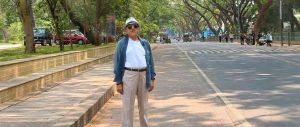
Dr. Nish Returns Home to IIT Bombay
With the founding of the Centre of Excellence in Photonic Research at IIT Bombay, I plan to give back to the IIT community a window to the innovation in a cutting-edge area that will surpass the Silicon Valley innovations and create a photonic-valley echo-system around IIT Bombay.
My advice to IIT Bombay students is to be bold, break boundaries, and be a pioneer in your field so your contributions can uplift society and the economic well-being of all. Curiosity leads to discoveries that can change the paradigm, and the education you receive at IIT Bombay will give you the right skills to be an innovator and become a leader in science and technology.
After 40 years in the USA, this is my attempt to return to my roots where I started my academic journey. Now, as a successful entrepreneur, I want to give back to the IIT Bombay community by creating a thriving venture and an exciting research centre.
We are deeply grateful to Dr. Nishikant (Nish) Sonwalkar for his time, generosity, and candour in sharing the remarkable arc of his journey—from his formative years at Powai to his pioneering contributions across the globe. His reflections are a powerful reminder of how curiosity, compassion, and commitment can shape not only individual careers but entire fields of impact. We are honoured to feature his story in the Dean ACR Newsletter and are certain that his insights are sure to resonate with our alumni and inspire the next generation of students.

